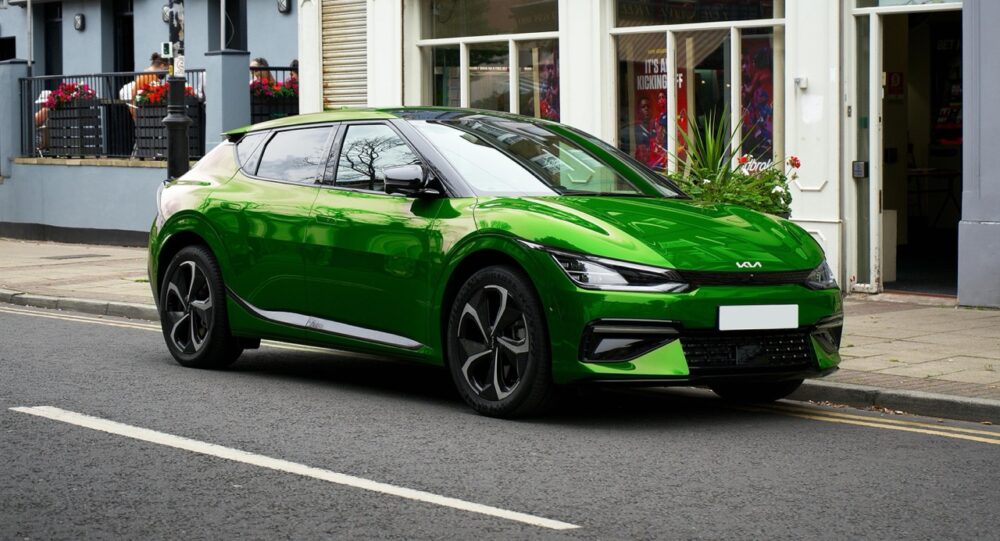Although now renowned for its performance luxury sedans and motorcycles, BMW began in 1916 as an aircraft engine manufacturer in Munich, Bavaria, Germany. At the time, automobiles were a luxury, and trains were the primary mode of transportation.
In 1918, following the end of World War I, aircraft production was banned in Germany, rendering BMW’s core business illegal. This was a defining moment for the company’s leadership, showcasing their entrepreneurial resilience. BMW pivoted to manufacturing motorcycle engines, brakes, farm equipment, and household items.
However, this shift wasn’t enough to sustain the company, and financial struggles forced BMW to briefly suspend operations in 1918.
Table of content
Seeds of hope
After years of manufacturing motorcycle engines for other brands, BMW introduced its first motorcycle, the R32, in 1923. It was a modern and revolutionary design for its time, setting a new standard in motorcycle engineering and influencing the industry for decades to come.

Early wins.
In 1928, BMW acquired Fahrzeugfabrik Eisenach, an automobile manufacturer, marking its entry into the car industry. The company then licensed the Austin Seven and released it under its own name. This became BMW’s first-ever car, sold as the 3/15, also known as the Dixi.

Following the success of the 3/15, BMW shifted its focus to building more modern, and sportier cars.
However, this progress was halted by the world war II, as the government shut down automobile production. During the war, BMW factories got occupied and dismantled by the allied forces. Once again, the company found a way to survive by producing pots, pans and bicycles.
Even after the war, BMW endured years of financial turmoil, staying afloat primarily through the production of motorcycles and the Isetta microcar.
In 1959, the company was on the brink of a takeover by its rival, Daimler-Benz. However, Herbert Quandt intervened, rescuing BMW from financial collapse and becoming its largest shareholder. His support kept the company afloat until the release of the BMW 700.
The 700 was met with critical acclaim and played a crucial role in the company’s financial recovery and growth. To this day, the Quandt family remains the company’s major shareholder.

BMW’s rise and breakthrough
After producing 188,000 units, the 700s were discontinued in 1965. This marked BMW’s exit from the economy car market. Their efforts in the next decade gave rise to the New class of BMW. These models solidified BMW’s spot as the top sport sedan automaker.
The first model introduced in the New Class was the 1500. A 4-door compact 1500 which was first launched at the Frankfurt Auto Show. This led to the iconic 2002 and the 3 Series in 1975.

The first 3 Series, known as the E21, was far more stylish inside and out than its rivals at the time. It abandoned the boat-like appearance of previous models in favor of a sleeker design and a more refined interior.
Beyond aesthetics, the E21 was quieter, offered a smoother ride, and was more fuel-efficient. Under the hood, it retained the M10 4-cylinder engine from previous models but featured a redesigned combustion chamber and improved piston design for better performance.

BMW’s expansion within German
As demand grew, BMW faced a new challenge: It’s Munich plant had reached capacity. The solution came through the acquisition of Hans Glas GmbH, bringing the small automaker and its facilities in Dingolfing and Landshut to the BMW family.
Expansion to South Africa
In 1972, BMW made the strategic decision to acquire Praetor Monteerders, a company that assembled BMW vehicles in South Africa. This move gave BMW control of the Rosslyn plant, making it their first manufacturing facility outside Germany.
Over the next few decades, BMW invested billions of rands into Rosslyn, transforming it from a simple assembly operation into a full-scale production hub. Today, the plant exports major BMW models to 40+ global markets, including Sub-Saharan Africa.

Performance revolution
The 1970s, marked BMW’s bold entry into organized motorsport, beginning with the creation of BMW Motorsport GmbH in 1972. This new subsidiary brought all of BMW’s racing activities under one roof.
Later rebranded as BMW M GmbH, it brought countless motorsport victories and pioneered technologies that shaped BMW’s high-performance vehicles. The crown jewel of this revolution was the M3. A car with a high-revving engine and precise handling that dominated both racetracks and roads. Even today, it sets the benchmark that competitors strive to match.
BMW’s iconic headquarters
In 1970, BMW began the construction of its headquarters, a major landmark in Munich since its opening in May 1973. Known as the 4-cylinder building because of the shape, the 101 meter tower mimics the shape of a four cylinder in a car engine. And its museum, a bowl-shaped building beside it, mimics a cylinder head.

Conquering new territory: The arrival of the BMW X5, BMW X3 and BMW X6
In 1999, BMW made an entry into the SUV market with the X5. The X5 was BMW’s interpretation of what a Sports Utility vehicle should be. And it was so successful that it led to the production of more SUVs, opening a new chapter in BMW’s history.
The more compact X3 arrived, offering the same sporty DNA in a smaller package. Then the bold X6, which blended SUV capability with coupe-like styling, a combination that nobody thought would work until they saw it in action.
Throughout this era, BMW demonstrated an ability to identify and create new market segments while maintaining their “ultimate driving machine” ethos. The success of the X series proved that BMW could transfer their performance DNA to any vehicle category they chose to enter.
The New Generation of BMWs
2006 marked the shift to turbo-charging and smaller engines with of the first 6-cylinder engine in the E92 3 series. This shift was showing up not only in the company, but in the global automotive industry. In 2011, they release the F30 3 series, this time using turbocharged engines in all its units. The same year they released the F10 5 series, marking the first time the turbocharged engines were ever used in the M5 models.
The i3 release in 2013 marked BMW’s first electric car. It also marked the first production car to have its structure built mostly from carbon fiber, a huge feat at the time.

The i8 became its first hybrid car and also the first car to use the inline-3 turbo engine. It showed BMW’s growing commitment to electrification and sustainability. Despite that, BMW continued to keep performance top of mind. The i8 could go from 0 – 60mph in 4.2secs and all the way to 100mph in 9.7secs.

In its market position, BMW has maintained its status as one of the world’s leading premium automotive manufacturers. They have expanded into new segments while maintaining their core identity. This ability to adapt while staying true to their values has been key to their continued success.
Looking to the future, They company’s commitment to electric mobility is clear. They have invested heavility into the EV technology and plan to introduce new EV models across various segments.
It has said that this transition isn’t only about replacing combustion engines with electric motors but about reimagining what mobility can be in an electric age. Which coincidentally is a mission that drives us at Tarlen.
Rent one on Tarlen
Rent Ritesh’s BMW X3 on Tarlen.









